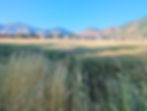
A friend was trying to explain what I do to someone and said something that stuck with me: “She’s on a mission to get rid of everyone’s grass.”
She meant it kindly—just trying to offer a quick snapshot of my work. But like most simplifications, it missed the heart of it. I’m not trying to erase grass. I’m trying to help people see the difference between a living system and a decorative obligation.
Because the truth is: I love grasses.
Grasses are some of the most important lifeforms on the planet. They hold the world together—quite literally. Their roots stabilize soil, prevent erosion, and cycle nutrients through ecosystems with stunning efficiency. A single square meter of native prairie can contain up to 200 species of plants, most of them grasses and grass-like. Some roots stretch ten feet deep or more, creating vast underground networks that store water and carbon, even in drought.
In fact, it’s no exaggeration to say that grasses shaped human civilization. Wheat, rice, corn, barley, millet, sorghum—all grasses. Our earliest agricultural revolutions were seeded in grasslands. Every loaf of bread, every bowl of rice, every tortilla is a gift from a grass that was once wild.

And wild grasses still offer gifts—just not the kind that come neatly trimmed at two inches tall. In regenerative systems, perennial grasses build soil, outcompete weeds, provide fodder for animals, and create habitat for insects, birds, and even mammals. Many are fire-adapted and drought-resilient. They evolve with the land instead of resisting it.
But that’s not the grass most people have.
Most urban and suburban lawns are made of a handful of European or East Coast varieties—like Kentucky bluegrass—that aren’t adapted to the dry western climate. They’re kept alive with sprinklers, herbicides, and a lot of weekly labor. These lawns do very little ecologically. They offer no food, no meaningful habitat, and they leach precious resources. In Utah, nearly two-thirds of residential water goes to outdoor landscaping, mostly lawns.
So no, I’m not trying to “get rid of everyone’s grass.”
I’m trying to shift the story. To ask: what if we planted the grasses that belong here? What if our yards reflected the genius of the bioregion instead of resisting it? What if, instead of spending every weekend mowing and watering, we watched golden native bunchgrass wave in the wind, feeding the soil and sheltering pollinators?
This work isn’t about aesthetics (though I do value aesthetics). It’s about relationship.
Lawns are a holdover from colonial ideas of control and status. But grasses also remind us of cooperation, resilience, and deep time. They root us in the memory of wild plains and whisper the truth: the land is not something we decorate, it’s something we belong to.
So yes, maybe I am on a mission.
Not to wipe out grass, but to remember it. To restore it. To listen to it again.
And maybe to help a few front yards stop pretending to be golf courses and start becoming prairies.





